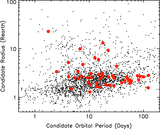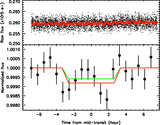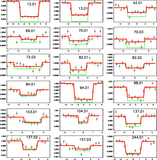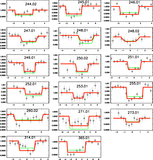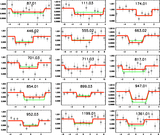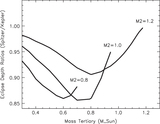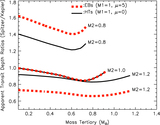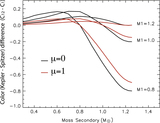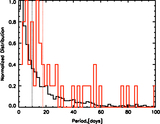Image Details
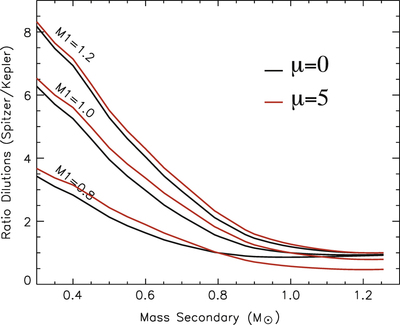
Caption: Figure 7.
Ratios of the dilutions integrated in the Spitzer photometric bandpass over the dilution integrated in the Kepler photometric bandpass as a function of the mass of the secondary star (M2) for an eclipsing binary stellar system. This system is composed of a secondary star eclipsed by a tertiary stellar component, which is blended with a primary star of mass M1. Two scenarios of distance modulus μ are presented: ﹩\mu =0﹩, implying that the binary system is equidistant to the primary star (HT: hierarchical triple), and ﹩\mu =5﹩ for a background binary (EB: eclipsing binary) scenario. Three cases of M1 are presented for reference (see Equation (6)).
Copyright and Terms & Conditions
© 2015. The American Astronomical Society. All rights reserved.


